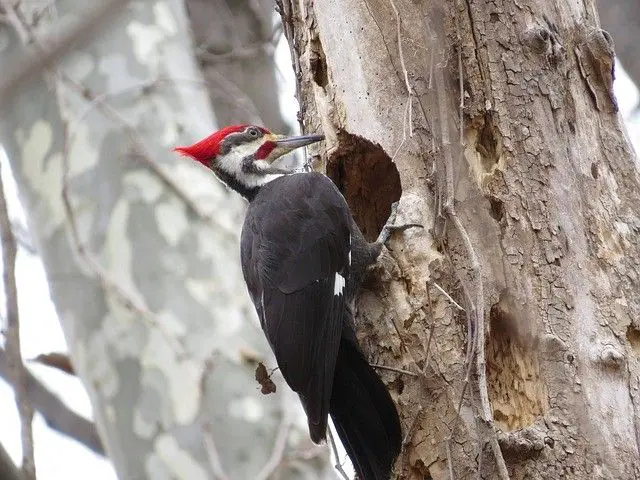Woodpeckers can cause extensive damage to the siding on homes as they drill holes looking for insects and create nesting cavities. This damage is unsightly and can be costly to repair. Fortunately, there are several effective methods to deter woodpeckers and prevent further damage.
Page Contents
Why Do Woodpeckers Peck Siding?
Woodpeckers peck siding for a few main reasons:
- Looking for food – Woodpeckers drill holes to find carpenter bees, ants, and other insects nesting behind the siding.
- Creating nesting sites – Woodpeckers will excavate holes in siding to make nesting cavities, especially in the springtime.
- Drumming – The loud drumming on siding is a territorial signal and mating call.
Certain types of siding like cedar clapboard are more prone to woodpecker damage because they offer good acoustics for drumming and are easier to penetrate.
Effective Ways to Deter Woodpeckers
Here are some of the most effective methods to stop woodpeckers from damaging siding:
Use Visual Deterrents
Visual scare tactics like fake owls, reflective tape, and wind chimes near the problem area can scare woodpeckers away. Try moving them to new locations periodically so the birds don’t get used to them. Dark colored spider shapes and balloons with large eyes are especially effective.
Apply Repellent Chemicals
Applying non-toxic chemical repellents designed for woodpeckers will make the siding unappetizing. Products like Roost-No-More contain methyl anthranilate or capsaicin which irritate birds’ nostrils and taste buds without harming them. Reapply after heavy rains.
Install Physical Barriers
Covering damaged areas with hardware cloth, metal sheeting, or roofing tar will deny woodpeckers access. Wrap prone sections of siding in burlap or install cinder blocks to prevent them landing. Netting with 1-2 inch mesh openings can also exclude birds.
Use Noise Deterrents
Automated high frequency sound devices will disturb woodpeckers sensitive hearing and drive them away from the area. Devices are available that detect pecking sounds and activate targeted sonic harassment.
Apply Woodpecker Tape
Special woodpecker repellent tape contains reflective strands and can effectively discourage pecking when applied to impacted areas. The tape prevents insects accessing the siding as well.
Seal Off Entry Points
Sealing cracks, crevices, and gaps in siding with caulk or filler blocks access to food sources and nesting spots. This denial of shelter and sustenance motivates them to leave.
Trim Trees and Vegetation
Woodpeckers are drawn to homes with dense trees against the siding. Trimming back branches creates open space to make the area less attractive. This also removes potential nesting sites.
Use Exterior Insulation
Adding rigid foam insulation when residing can deter woodpeckers since they prefer softer woods. The extra layer also reduces sound transmission.
Employ Professional Pest Control
For severe woodpecker problems, calling a professional pest control company may be the best solution. They have access to specialized equipment like Pole Propane Exploders to drive the birds away humanely.
Prevention Tips
Preventing woodpecker damage in the first place is ideal. Here are some useful prevention tips:
- Use siding materials like vinyl or aluminum that are less appealing to peck.
- Install birdhouses to provide sanctioned nesting spots away from the house.
- Wrap insulation with heavy plastic on the exterior walls prior to residing.
- Attach bug zappers near problem areas to eliminate their food source.
- Promptly clean up ant trails and carpenter bee swarms near the home.
Conclusion
Woodpeckers can rapidly do costly damage pecking siding, but there are many effective control methods available. Using visual, sound, and taste repellents, physical deterrents, vegetation management, and professional assistance can all stop woodpecker damage. With persistence in applying multiple tactics, woodpeckers can be discouraged from creating holes in siding long-term. Preventative measures like birdhouses, less-attractive siding, and eliminating insect nests can also protect the home.
